Star turn: NYC’s Friedman Benda gallery celebrates a decade of radical design
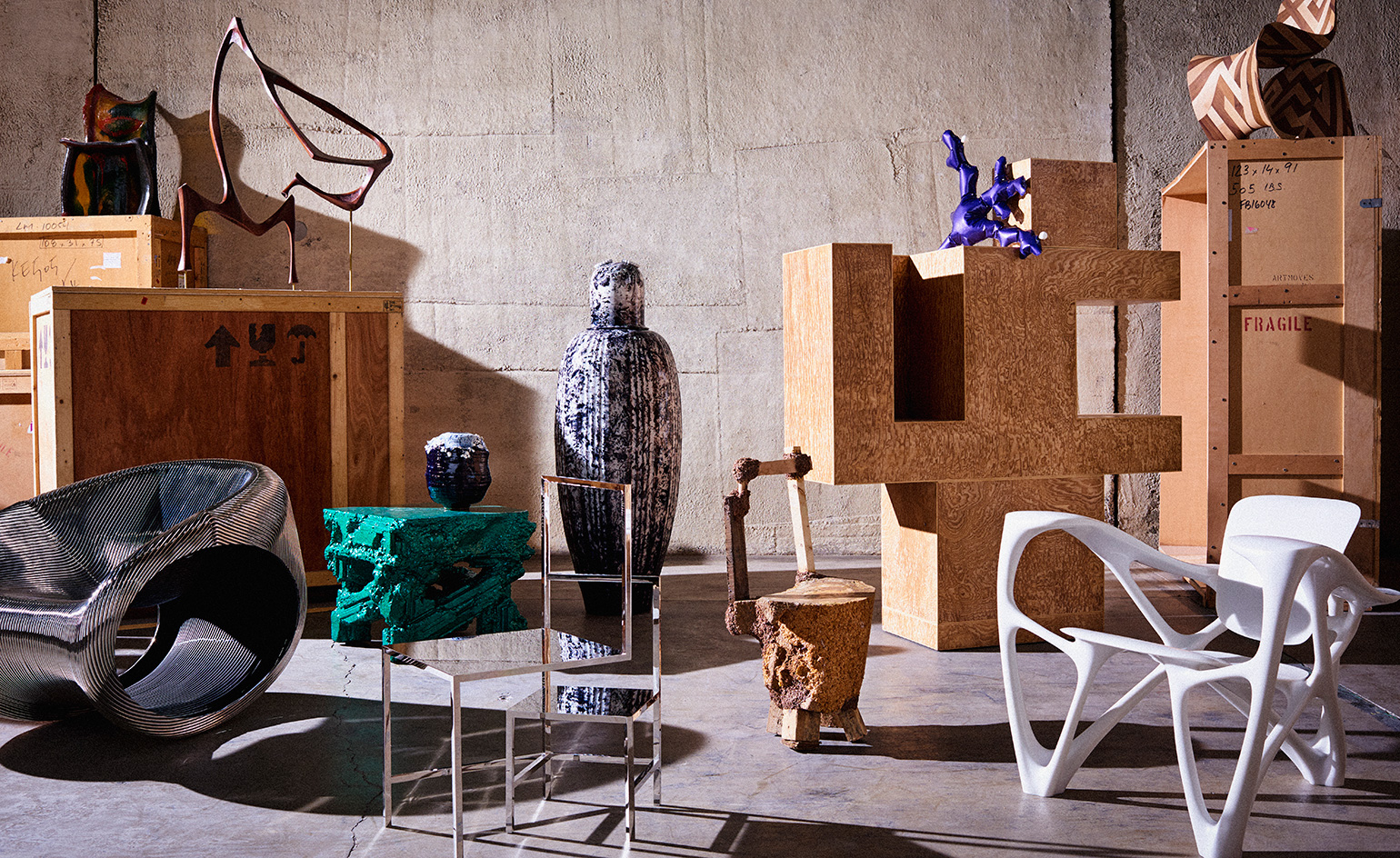
A decade in business might seem a just occasion to look back on past successes and accomplishments, but New York design gallery Friedman Benda is gazing ahead. Instead of staging a retrospective to celebrate its tenth anniversary, the gallery has assembled 20 artists and designers from its past, present and future to articulate the guiding principles that continue to set it apart. Entitled ‘DNA10’, the commemorative show features multiple iconic sculptural pieces and a range of sketches, drawings, videos, mood boards and models that explore each artist’s practice, highlighting their place in the canon of sculptural design.
‘Ten years is not an eternity compared with a lot of galleries, but we joke that we want to do it while we’re still young and good-looking,’ says the gallery’s Zurich-born founder Marc Benda. ‘I wanted to do this in celebration of everyone who’s contributed and who, with the exception of Ettore Sottsass and Shiro Kuramata, is still very much alive and kicking.’
Established in 2007 by Benda and the veteran art dealer Barry Friedman (now retired), together with founding partner Jennifer Olshin, the Chelsea-based gallery has dedicated itself from the get-go to giving artists and designers a platform. Friedman Benda’s roster features influential talents such as Kuramata, Sottsass, Ron Arad, the Campana brothers and Wendell Castle.
In 2015, the gallery separated its visual art enterprises into a new entity, Albertz Benda (co-founded with the art dealer Thorsten Albertz). This allowed Friedman Benda to focus solely on design-art. The gallery also put a new emphasis on emerging designers, aided in part by the opening of an experimental project space. Adam Silverman and Misha Kahn are among the artists who have had the chance to transform that space.

See selfies taken for Wallpaper* by some of the designers whose work appears in the ‘DNA10’ show
Finding a way to showcase such a diverse design roster was a struggle. ‘We look more forward than back in this show,’ Benda says. ‘It’s an extremely complex undertaking because I’m trying to put together for the public all the reasons that make each designer so strong, and what fascinated us about them in the first place – whether it’s process, trains of thought [or] an approach to creation and realisation. Each designer is looked at in their own individual way. The show doesn’t try to press everyone into a pre-made square.’
‘These people are all part of the DNA from the last ten years,’ Olshin adds. ‘It’s not necessarily about the gallery exactly where it is now – it’s almost a culmination.’
‘It’s also to show the diversity of the programme that we’ve reached,’ Benda says. ‘Five continents, four to five generations, approaches ranging from the handmade to the highly industrial, or very cutting edge and high tech. There are people whose work is so far advanced and accomplished, and there are others who are still less known.’
‘DNA10’ opens with four iconic design pieces that the gallery refers to as ‘archetypes’: Gerrit Rietveld’s Red Blue chair (1919-21), Sottsass’ Large Aphrodisiac Vase [for Conserving Contraceptive Pills] (1966), Kuramata’s Miss Blanche chair (1989) and Joris Laarman’s Bone armchair (2006).
‘They are the first designers who greet you,’ Benda says. ‘[Rietveld is] an anchor point because he’s one of the grandfathers of all the things we do; applying the rigour of an art movement to creating a chair that completely bursts the mould of what a chair can be or should even represent. For us, he’s one of the people who threw open the gates.’
The exhibition also showcases creatives such as Andrea Branzi, Faye Toogood, Marcel Wanders, Paul Cocksedge, Front, Byung Hoon Choi and Forrest Myers, who have all shown with the gallery. ‘A few things are made specially for the show, but we didn’t want to put pressure on the designers to create something for this,’ Benda says. ‘There were a couple of people who specifically wanted to do this, and that’s great.’
Christopher Schanck, a Detroit-based sculptor, is debuting a tall cabinet from his recognisable Alufoil series, in which he covers discarded materials with coloured aluminium foil and seals them in clear resin for a heightened material effect. Schanck’s first ever solo show is currently scheduled at Friedman Benda for February 2018 – it will be more than a year in the making.
In the past ten years, Friedman Benda’s unassuming gallery space has been repeatedly transformed by the creative visions of its artists. It became an immersive environment for Nendo’s 2009 ‘Ghost Stories’ exhibition, with 6,800 threads suspended from the ceiling. It has presented momentous new work, such as Cocksedge’s 2015 Freeze furniture series, for which pieces of metal were cooled to freezing temperatures and then warmed up to forge a seamless bond between them. And it has staged unprecedented showcases, such as the 2007 survey of new works by Sottsass.
The gallery’s stagings have certainly not been conservative. ‘I feel like we never stood still,’ says Benda. ‘We’ve never allowed ourselves to sit down and reflect. It’s a really nice thing for me to know that we’ve always stayed on our toes, looked around, never taken things for granted.’
Above all, Friedman Benda prides itself on its integrity and commitment to quality. ‘We want to work with leaders in whatever direction they choose,’ Benda says. ‘We want to work with people who are or promise to become larger than life in many ways. It’s about the longevity, the long horizon.’
‘If the artists are good, they’re always producing something, always going forward,’ adds Olshin. ‘How we see our role is to say at some point, stop the camera right here, and we show that. That’s how we produce what we do – it’s a moment. All of these pieces will continue, hopefully, to evolve into other things and other bodies of work.’
As originally featured in the June 2017 issue of Wallpaper* (W*219)

Left, Beyond The Image 013-02, 2013, by Byung Hoon Choi, and Sketch chair, 2005, by Front. Right, Marc Benda and Jennifer Olshin with Eleventh Hour, 2015, by Wendell Castle.

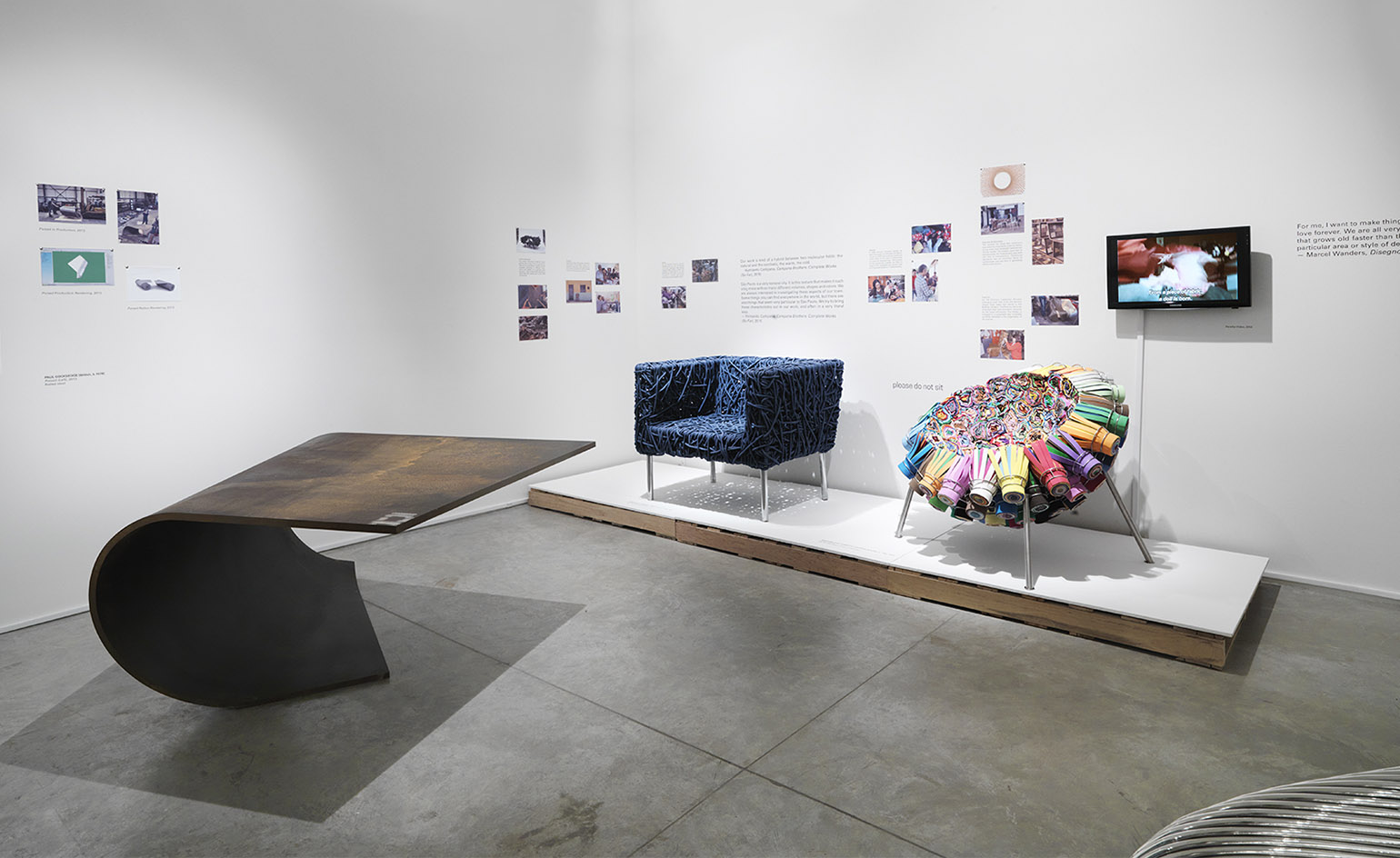
Installation view of ‘DNA10’ at Friedman Benda. Courtesy of Friedman Benda
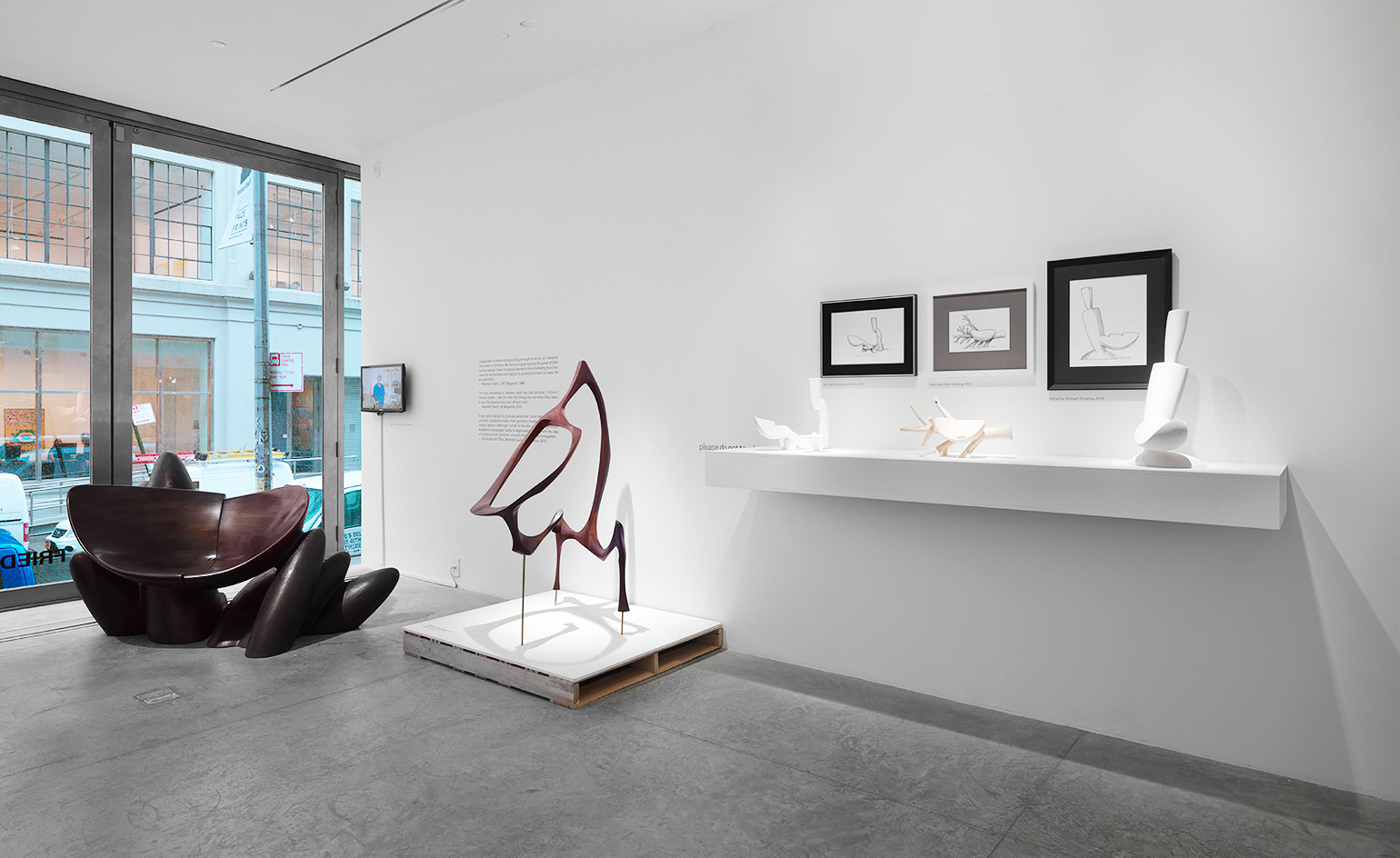
Red Blue, 1919-21, by Gerrit Rietveld; [Large Aphrodisiac Vase [for Conserving Contraceptive Pills], 1966, by Ettore Sottsass; Miss Blanche, 1989, by Shiro Kuramata; and Bone, 2006, by Joris Laarman. Courtesy of Friedman Benda
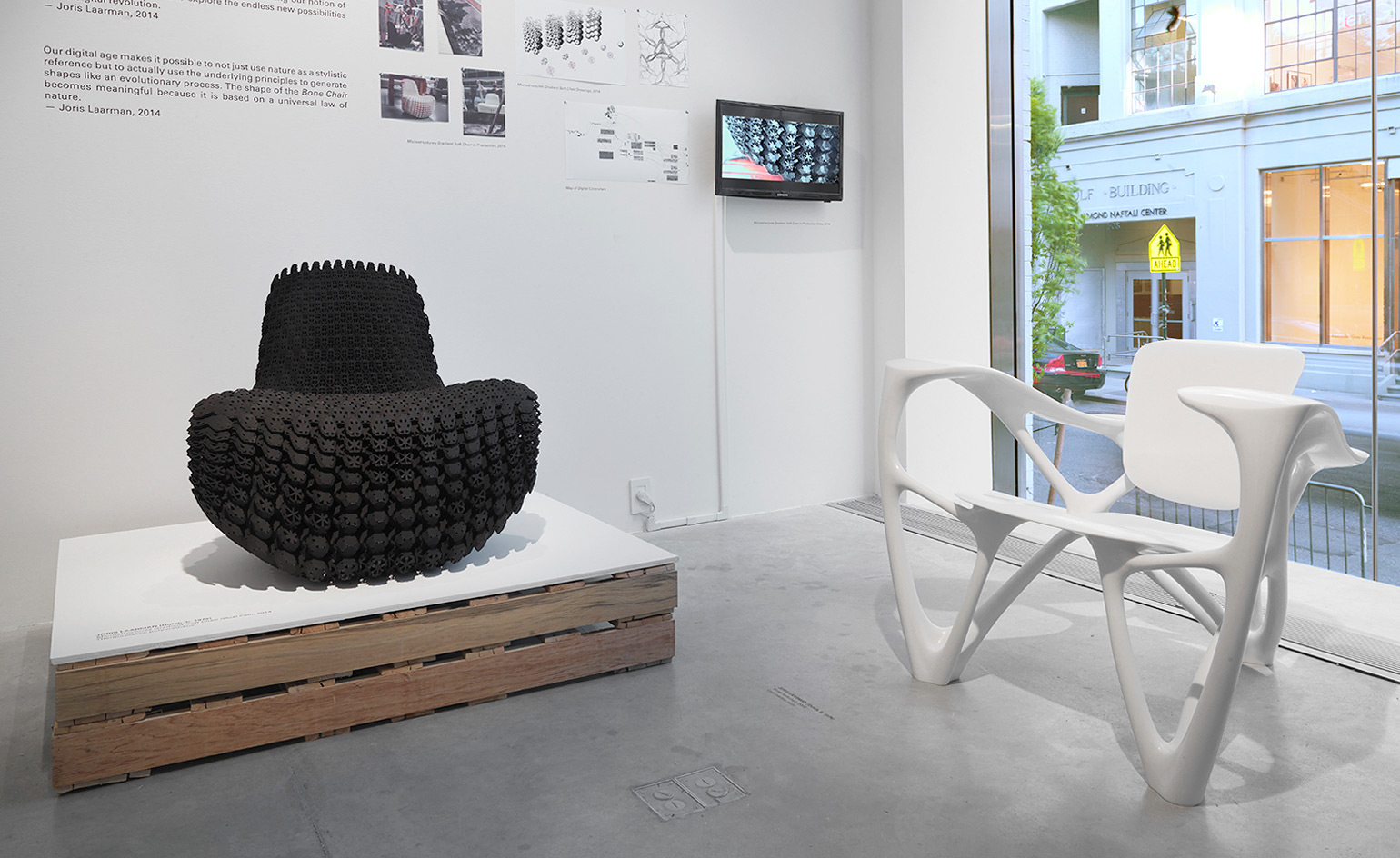
In the past ten years, Friedman Benda’s gallery space has been repeatedly transformed by the creative vision of its artists and designers.= Courtesy of Friedman Benda

Remolten N1: Revolution Stool S and Remolten N1: Revolution Stool Mini Stool, by GT2P, 2016.
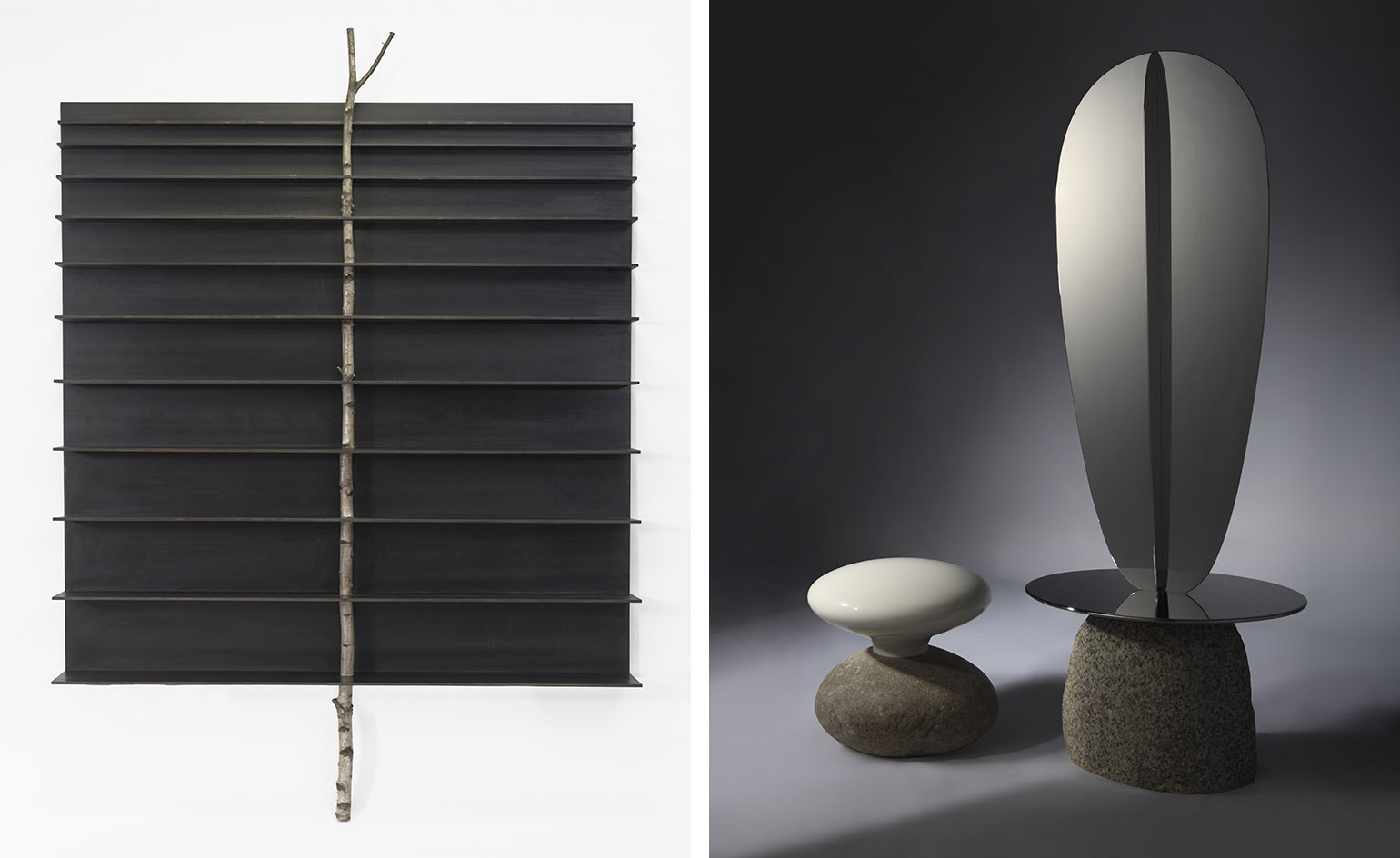
Left, Tree 5, by Andrea Branzi, 2010. Right, beyond the image 013-01, by Byung Hoon Choi, 2013.
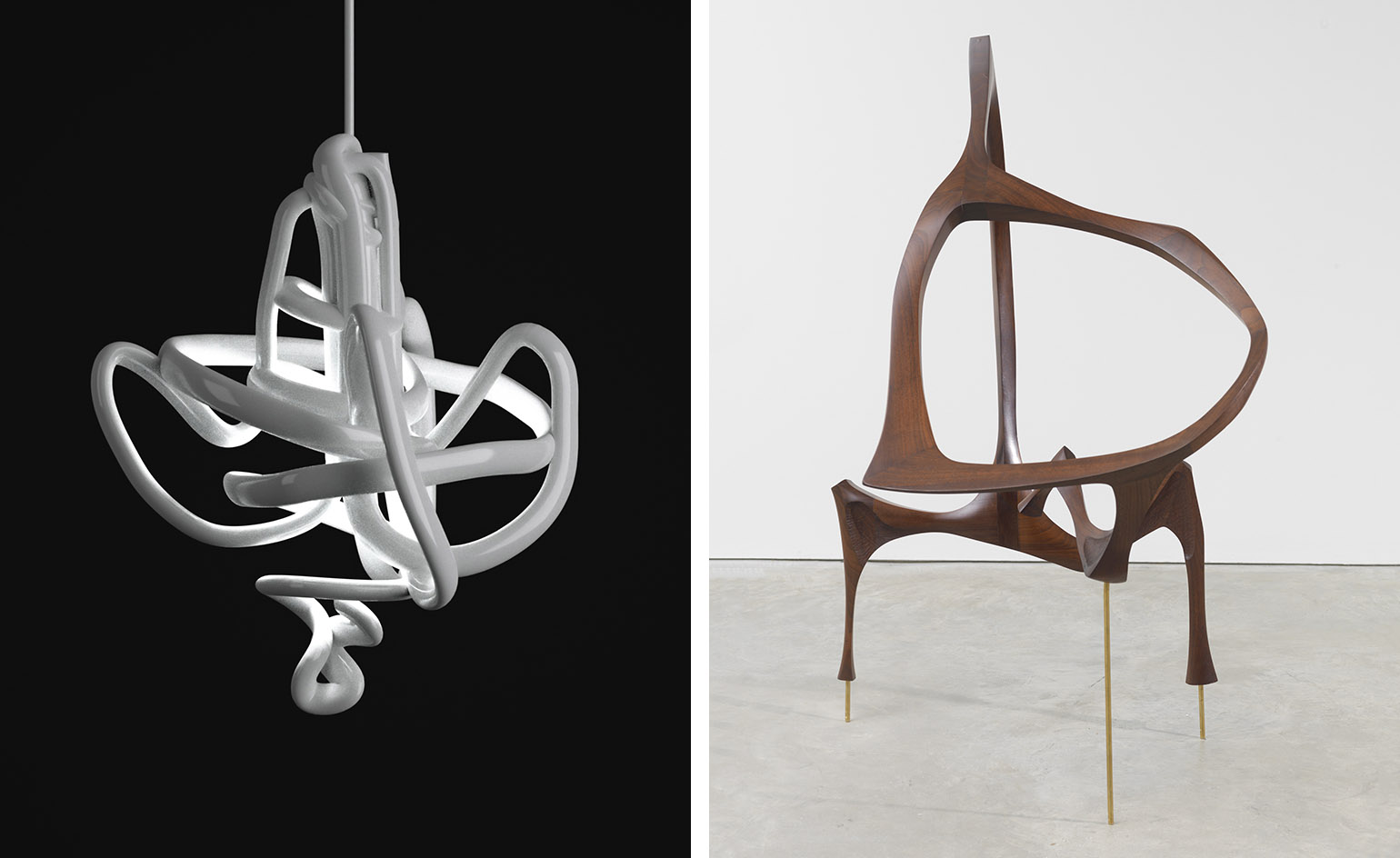
Left, Materialized Sketch of a Chandelier, by Anna Lindgren, Katja Pettersson, Sofia Lagerkvist, and Charlotte von der Lancken for Front Design, 2005. Right, Walnut Sculpture, by Wendell Castle, 1958-1959. Courtesy of Front Design, Wendell Castle and Friedman Benda

Installation view of ‘DNA10’ at Friedman Benda. Courtesy of Friedman Benda

Untitled, by Adam Silverman, 2016. Courtesy of Friedman Benda and Adam Silverman

Branzi Tree 2, by Andrea Branzi, 201. Courtesy of Friedman Benda and Andrea Branzi
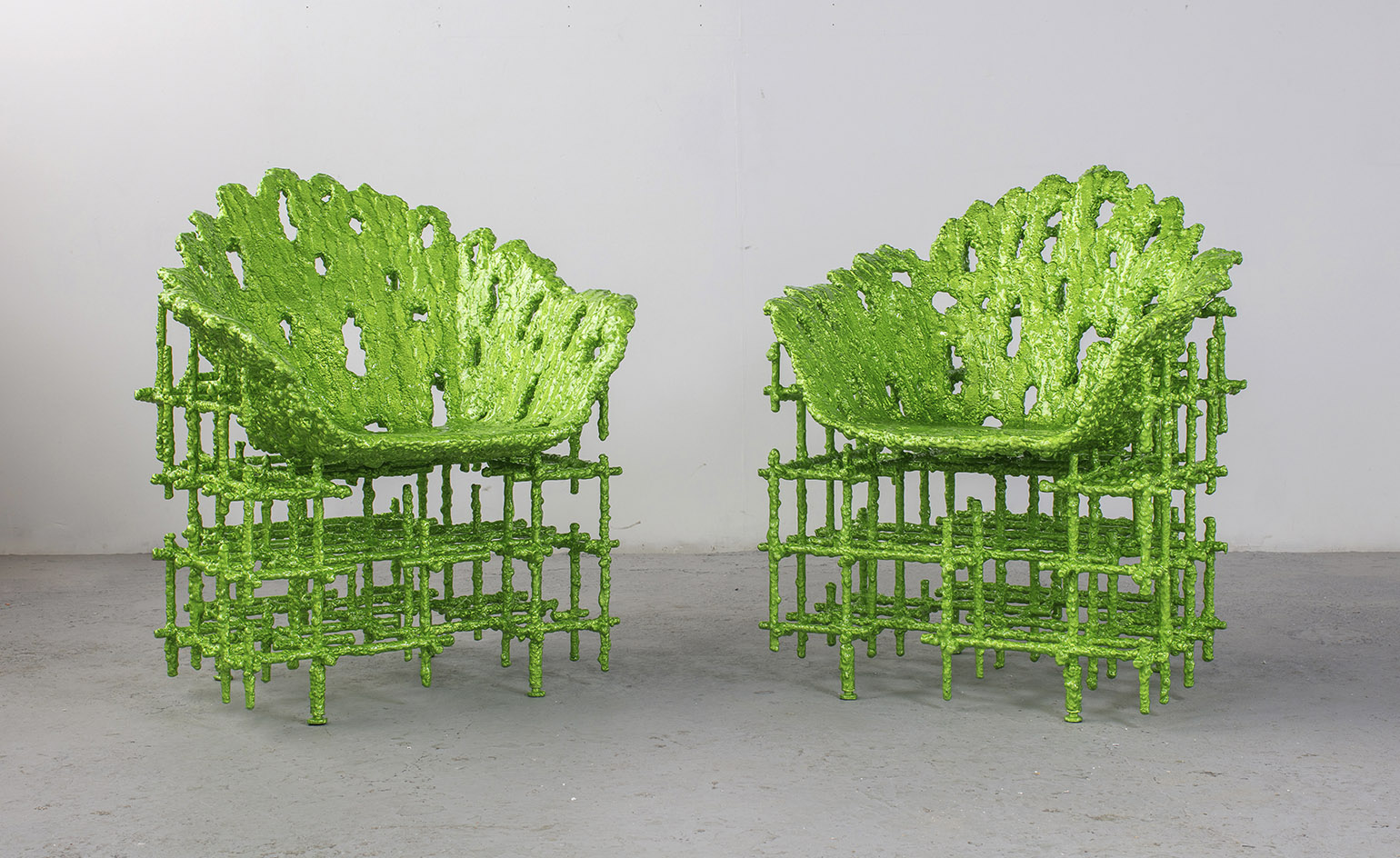
Alufoil, by Chris Schanck, 2016. Courtesy of Friedman Benda and Chris Schanck
INFORMATION
‘DNA10’ is on view until 10 June. For more information, visit the Friedman Benda website
ADDRESS
Friedman Benda
515 West 26th Street
New York, NY, 10001
Receive our daily digest of inspiration, escapism and design stories from around the world direct to your inbox.
Pei-Ru Keh is a former US Editor at Wallpaper*. Born and raised in Singapore, she has been a New Yorker since 2013. Pei-Ru held various titles at Wallpaper* between 2007 and 2023. She reports on design, tech, art, architecture, fashion, beauty and lifestyle happenings in the United States, both in print and digitally. Pei-Ru took a key role in championing diversity and representation within Wallpaper's content pillars, actively seeking out stories that reflect a wide range of perspectives. She lives in Brooklyn with her husband and two children, and is currently learning how to drive.
-
 Korean designer Yoonjeong Lee tells ordinary stories in extraordinary ways
Korean designer Yoonjeong Lee tells ordinary stories in extraordinary waysWallpaper* Future Icons: Yoonjeong Lee's work is based on a fascination for utilitarian objects, from pencils to nails, recreated with innovative casting methods
-
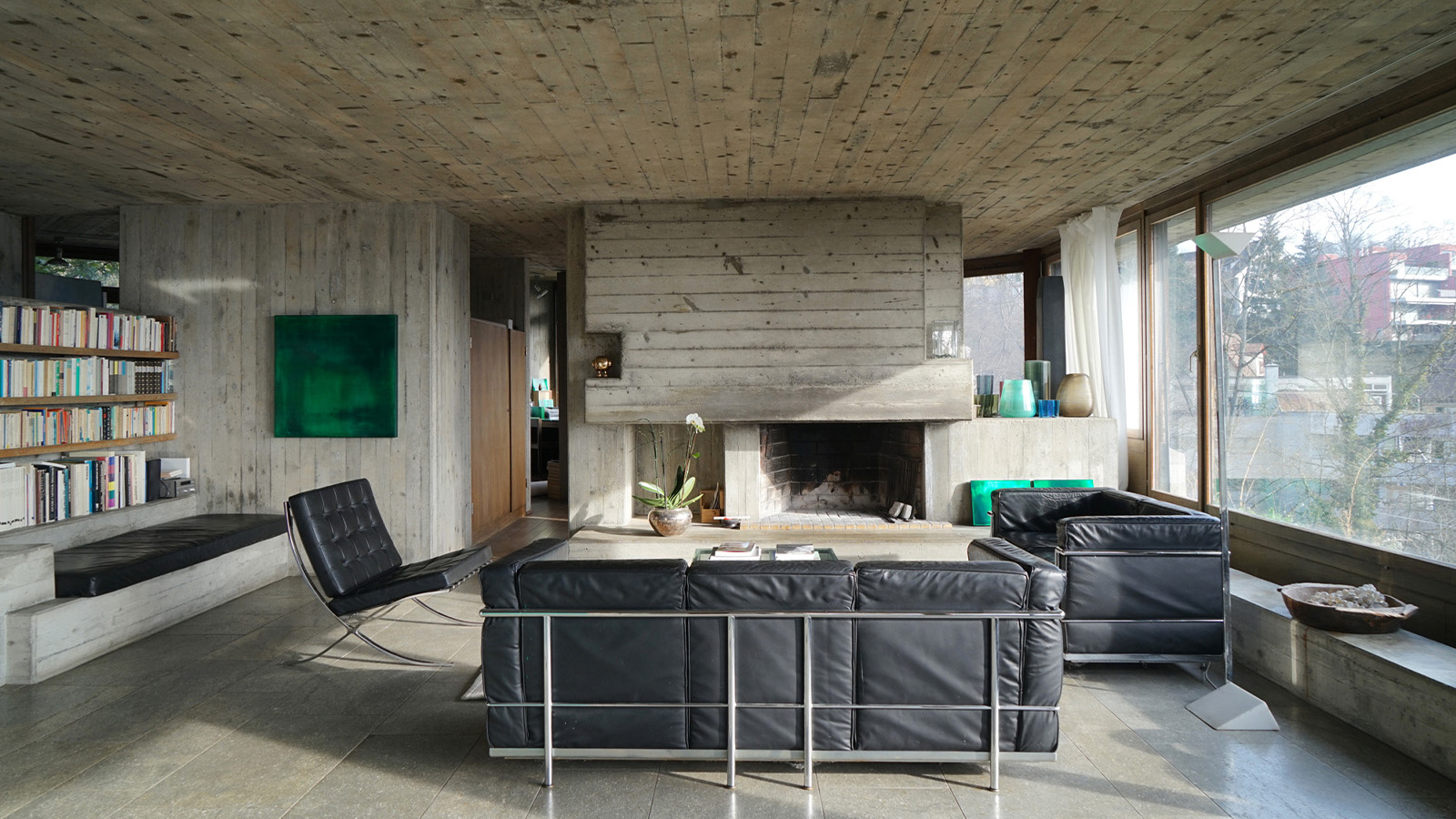 Inside architect Andrés Liesch's modernist home, influenced by Frank Lloyd Wright
Inside architect Andrés Liesch's modernist home, influenced by Frank Lloyd WrightAndrés Liesch's fascination with an American modernist master played a crucial role in the development of the little-known Swiss architect's geometrically sophisticated portfolio
-
 Volvo’s quest for safety has resulted in this new, ultra-legible in-car typeface, Volvo Centum
Volvo’s quest for safety has resulted in this new, ultra-legible in-car typeface, Volvo CentumDalton Maag designs a new sans serif typeface for the Swedish carmaker, Volvo Centum, building on the brand’s strong safety ethos
-
 Out of office: The Wallpaper* editors’ picks of the week
Out of office: The Wallpaper* editors’ picks of the week'Tis the season for eating and drinking, and the Wallpaper* team embraced it wholeheartedly this week. Elsewhere: the best spot in Milan for clothing repairs and outdoor swimming in December
-
 Nadia Lee Cohen distils a distant American memory into an unflinching new photo book
Nadia Lee Cohen distils a distant American memory into an unflinching new photo book‘Holy Ohio’ documents the British photographer and filmmaker’s personal journey as she reconnects with distant family and her earliest American memories
-
 Out of office: The Wallpaper* editors’ picks of the week
Out of office: The Wallpaper* editors’ picks of the weekIt’s been a week of escapism: daydreams of Ghana sparked by lively local projects, glimpses of Tokyo on nostalgic film rolls, and a charming foray into the heart of Christmas as the festive season kicks off in earnest
-
 Ed Ruscha’s foray into chocolate is sweet, smart and very American
Ed Ruscha’s foray into chocolate is sweet, smart and very AmericanArt and chocolate combine deliciously in ‘Made in California’, a project from the artist with andSons Chocolatiers
-
 Inside the work of photographer Seydou Keïta, who captured portraits across West Africa
Inside the work of photographer Seydou Keïta, who captured portraits across West Africa‘Seydou Keïta: A Tactile Lens’, an exhibition at the Brooklyn Museum, New York, celebrates the 20th-century photographer
-
 Out of office: The Wallpaper* editors’ picks of the week
Out of office: The Wallpaper* editors’ picks of the weekFrom sumo wrestling to Singaporean fare, medieval manuscripts to magnetic exhibitions, the Wallpaper* team have traversed the length and breadth of culture in the capital this week
-
 María Berrío creates fantastical worlds from Japanese-paper collages in New York
María Berrío creates fantastical worlds from Japanese-paper collages in New YorkNew York-based Colombian artist María Berrío explores a love of folklore and myth in delicate and colourful works on paper
-
 Out of office: the Wallpaper* editors’ picks of the week
Out of office: the Wallpaper* editors’ picks of the weekAs we approach Frieze, our editors have been trawling the capital's galleries. Elsewhere: a 'Wineglass' marathon, a must-see film, and a visit to a science museum